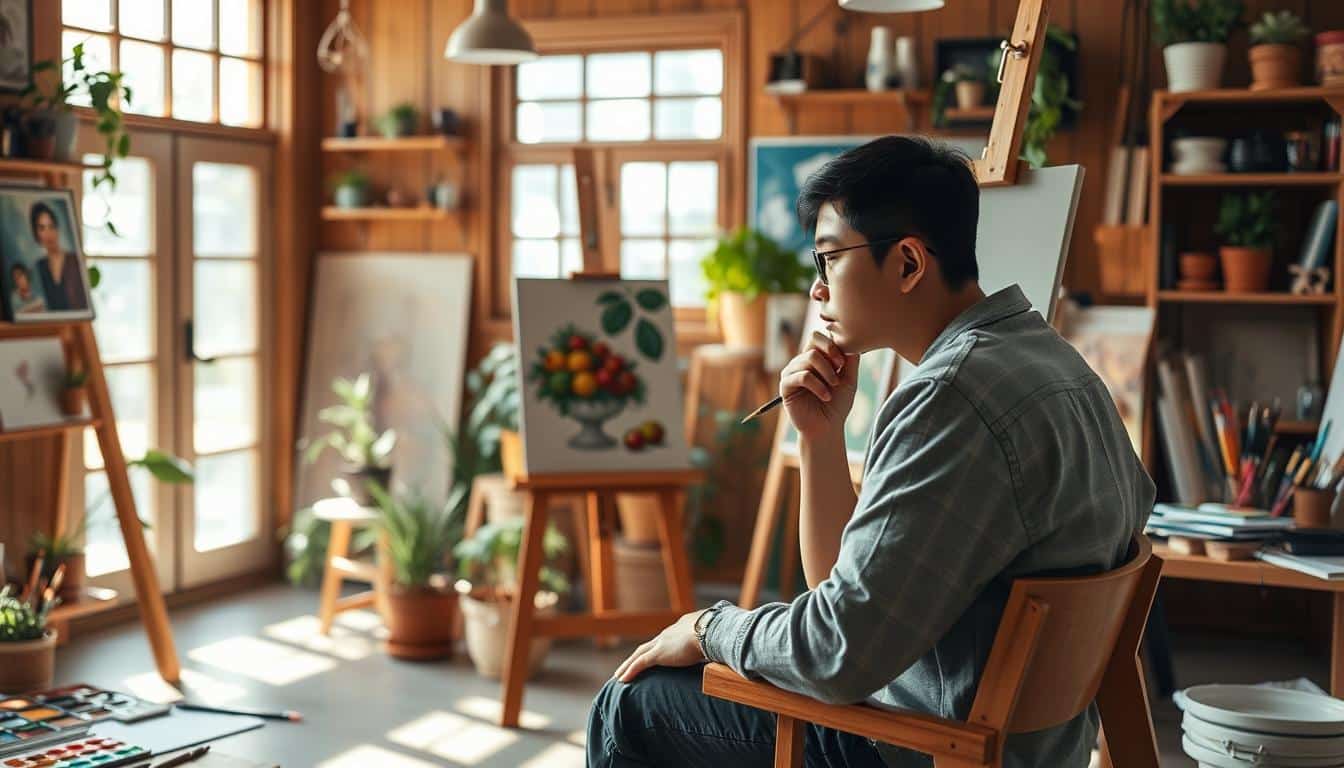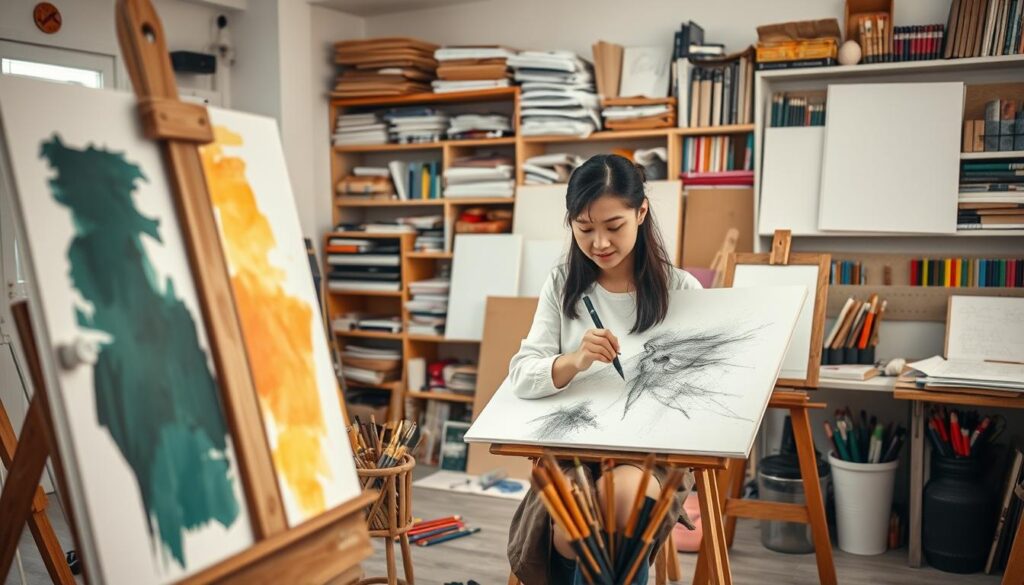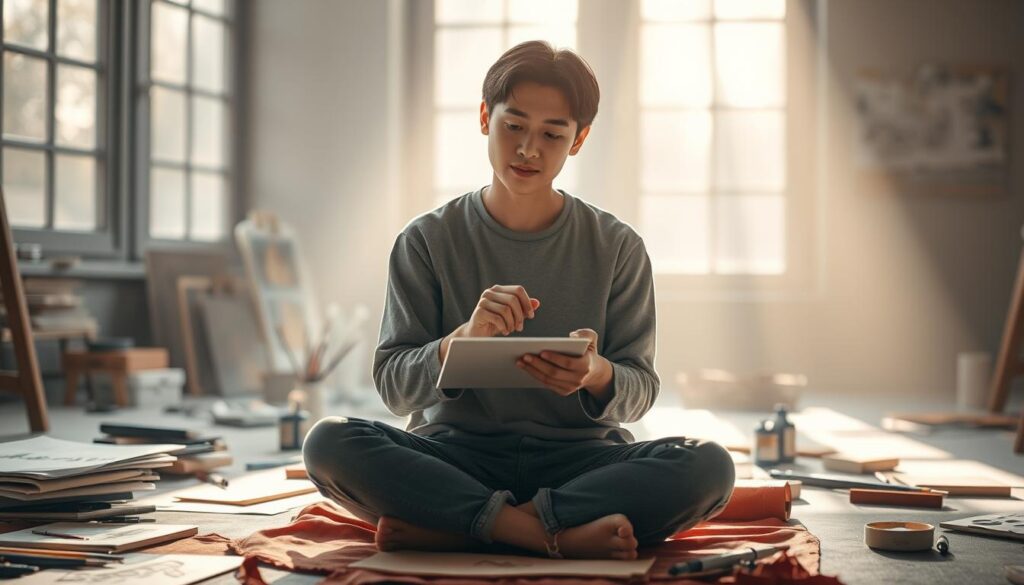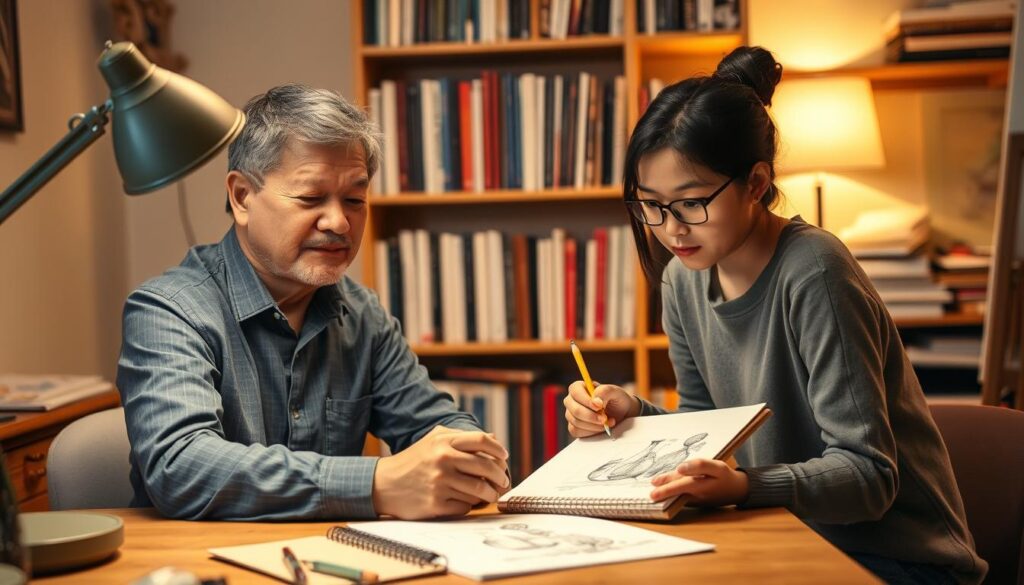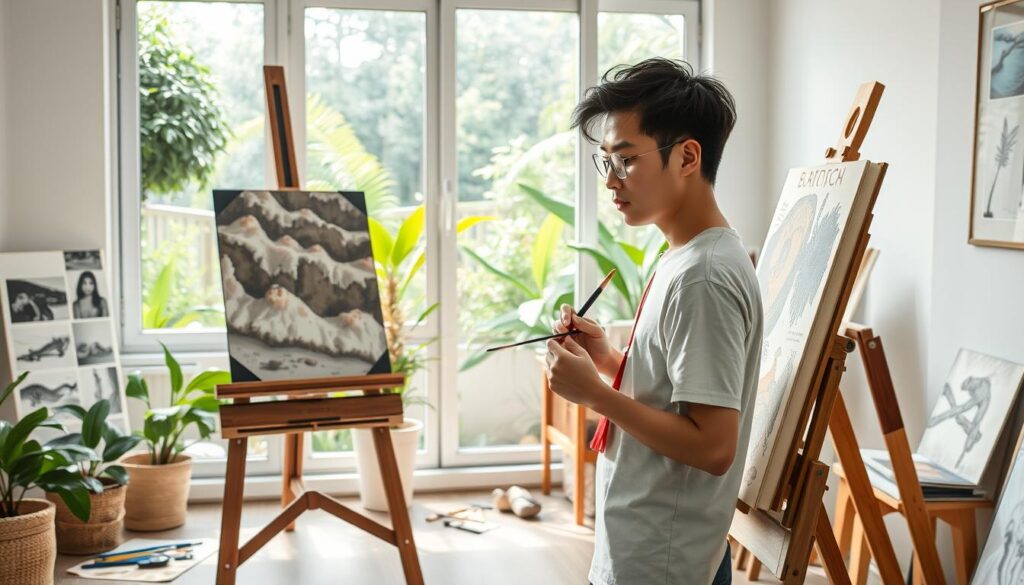Did you know that over 70% of A-Level Art students spend more time on their art homework than on all other subjects combined? This highlights the challenges and dedication required to excel in this demanding yet rewarding course.
Understanding the subject deeply is crucial for both academic and creative success. Students need to build a strong personal body of work while exploring various media to showcase their artistic and technical growth. However, many face common pitfalls, such as procrastination and compositional errors, which can hinder their progress.
Private tutoring can provide the necessary support to overcome these challenges. At getutor.com.hk, we offer free matching services to connect students with experienced tutors who can guide them through the course structure, from the Personal Investigation to the Timed Test.
This article will provide expert tips, explain the assessment structure, and share real examples to help students master their A-Level Art. Whether you’re a student or a parent, this guide will offer valuable insights to enhance your learning journey.
Key Takeaways
- Understanding the A-Level Art course structure is essential for success.
- Exploring diverse media and techniques can enhance your artistic growth.
- Addressing common mistakes early can improve your final pieces significantly.
- Private tutoring provides personalized support to overcome challenges.
- Effective time management is crucial to avoid procrastination and ensure project completion.
Understanding A Level Art: Foundations and Key Components
Mastering A-Level Art requires a deep understanding of its structure and components. This course is designed to challenge students while fostering creativity and technical skills.
Exploring Course Structure and Assessment
The A-Level Art course is divided into two main parts: the Personal Investigation and the Timed Test. The Personal Investigation is a coursework component where students develop a personal body of work, showcasing their artistic journey and exploration of themes. This component accounts for 60% of the final grade. The Timed Test, making up the remaining 40%, is an exam where students create artwork under controlled conditions, demonstrating their technical skills and creative thinking.
| Component | Weight | Description |
|---|---|---|
| Personal Investigation | 60% | A self-directed project exploring personal themes and ideas. |
| Timed Test | 40% | Exam setting where students create artwork within a set timeframe. |
Diverse Art Forms and Media Techniques
Students explore various media, such as drawing, painting, photography, sculpture, and digital art. This diverse exploration helps develop a broad skill set and understanding of different artistic approaches. Practical work is essential, allowing students to experiment and refine their techniques.
Individual research and study are crucial for developing a unique style. By examining historical and contemporary art, students gain inspiration and context for their work. This integration of technical skill and creative exploration is at the heart of the A-Level Art course.
Developing a Deep Creative Process for A-Level Art
Creating meaningful art requires more than just talent; it demands a structured approach and consistent effort. Students should focus on building a personal body of work that evolves over time, reflecting their artistic journey and technical growth.
Building a Personal Body of Work
A strong portfolio is the cornerstone of success in A-Level Art. It should showcase a range of techniques and ideas, demonstrating versatility and creativity. Regular sketchbook development is essential for refining skills and exploring new concepts. By dedicating time to experiment with different mediums, students can identify their strengths and areas for improvement.
Integrating Contextual Studies and Research
Contextual studies play a vital role in enriching the creative process. Students should explore historical and contemporary art to gain inspiration and context for their work. This integration of research and practical skill development helps build a well-rounded portfolio. For example, analyzing the work of renowned artists can provide insights into composition, color theory, and technique.
Methodical research, including GCSE-level preparation, supports deeper art study by fostering critical thinking and critical engagement. By questioning and refining their process continually, students can develop a unique style and narrative journey behind each piece.
Transitioning from early sketches to a comprehensive body of work requires steady effort. Important moments of technical trialing and creative exploration are key to building a portfolio that reflects personal growth and mastery of A-Level Art.
Mastering art a level: Proven Strategies and Skill Development
Success in A-Level Art demands more than creativity—it requires strategic planning and consistent effort. Students must adopt effective study habits and manage their time wisely to excel in both practical work and exams.
Effective Study Habits and Time Management
Breaking assignments into manageable tasks each term is crucial. For instance, dedicating specific weeks to graphic compositions and sculpture projects helps maintain progress. Regular reviews of practical work, such as sculpture and graphic pieces, allow students to refine their skills and address weaknesses early.
| Strategy | Details | Benefits |
|---|---|---|
| Term-Based Tasks | Divide projects into smaller, manageable parts each term. | Ensures steady progress and reduces overwhelm. |
| Regular Reviews | Weekly or bi-weekly assessments of practical work. | Identifies areas for improvement and enhances skill development. |
| Structured Time Management | Allocate specific hours daily for practical work and study. | Improves productivity and helps meet deadlines. |
By balancing creative practice with academic work, students can achieve their goals without compromising quality.
Leveraging Private Tutor Support from Getutor.com.hk
Private tutoring offers personalized guidance, especially for exam preparation. Tutors can provide expert feedback on practical work, helping students refine their techniques and understand exam requirements clearly.
With proper support, students and parents can see measurable improvement in their art levels, ensuring a successful academic journey.
Avoiding Common Mistakes and Overcoming Challenges
Understanding the challenges of A-Level Art is crucial for achieving success. Many students face common pitfalls that can hinder their progress, but with the right strategies, these obstacles can be overcome.
Identifying Frequent Pitfalls in Coursework
One of the most common mistakes students make is repetitive work without clear progression. This can lead to a lack of depth in their portfolio. Another issue is poor material management, which can disrupt the creative process. Additionally, many students struggle with aligning their work with assessment criteria, leading to lower grades than expected.
| Common Mistake | Solution |
|---|---|
| Repetitive Work Without Progression | Regularly review and refine your portfolio to ensure each piece shows growth and development. |
| Poor Material Management | Organize your materials effectively and plan your projects to avoid wasting resources. |
| Misalignment with Assessment Criteria | Study the assessment criteria thoroughly and ensure each piece of work addresses these points. |
By addressing these common pitfalls, students can improve the quality of their work and achieve better results. Remember, structured personal investigations and proper material management are key to success in A-Level Art.
Conclusion
Mastering A-Level Art is a journey that combines creativity with strategic planning. By understanding the course structure, exploring various media, and avoiding common mistakes, students can achieve outstanding results. A well-developed portfolio, supported by thorough investigations and contextual research, is key to academic success.
Addressing common pitfalls early, such as repetitive work and poor material management, can significantly improve outcomes over the year. Private tutoring from getutor.com.hk offers personalized support, helping students refine their techniques and meet exam requirements effectively.
Consistent quality work now opens doors to better opportunities in university and future careers in art, fashion, and design. We encourage parents and students to take proactive steps towards improvement, ensuring a successful academic journey.
Visit getutor.com.hk today for free tutor matching and expert guidance. With the right support, your efforts this year will lead to a brighter future in the world of art and design.
FAQ
What are the key components of an A Level Art course?
An A Level Art course includes practical work, personal investigation, and exams. Students explore a range of techniques and develop a portfolio that showcases their skills and creativity. Regular assessment and feedback ensure progress throughout the year.
How do I prepare for the A Level Art exam?
Focus on research, development, and practical work. Use your portfolio to demonstrate your process, from initial ideas to final outcome. Practice time management and review past papers to understand the exam format and question types.
What role does the personal investigation play in A Level Art?
The personal investigation is a critical part of the course. It allows students to explore a theme or idea in depth, combining research and practical work. This component helps develop critical thinking and creative skills, which are essential for university applications and future study.
How can I improve my photography skills for A Level Art?
Experiment with different techniques, such as lighting, composition, and editing. Study examples of professional photographers and analyze their process. Regular practice and feedback from teachers or mentors will help refine your portfolio and final piece.
What are common mistakes to avoid in A Level Art?
Avoid poor time management, as it can lead to rushed outcomes. Ensure your portfolio is well-organized and showcases your best work. Also, stay focused on your personal investigation and avoid deviating from your core idea.
How does private tutoring support A Level Art students?
Private tutoring provides personalized guidance, helping students refine their skills and address specific challenges. Tutors can offer expert advice on portfolio development, research strategies, and exam preparation, ensuring students achieve their full potential.

